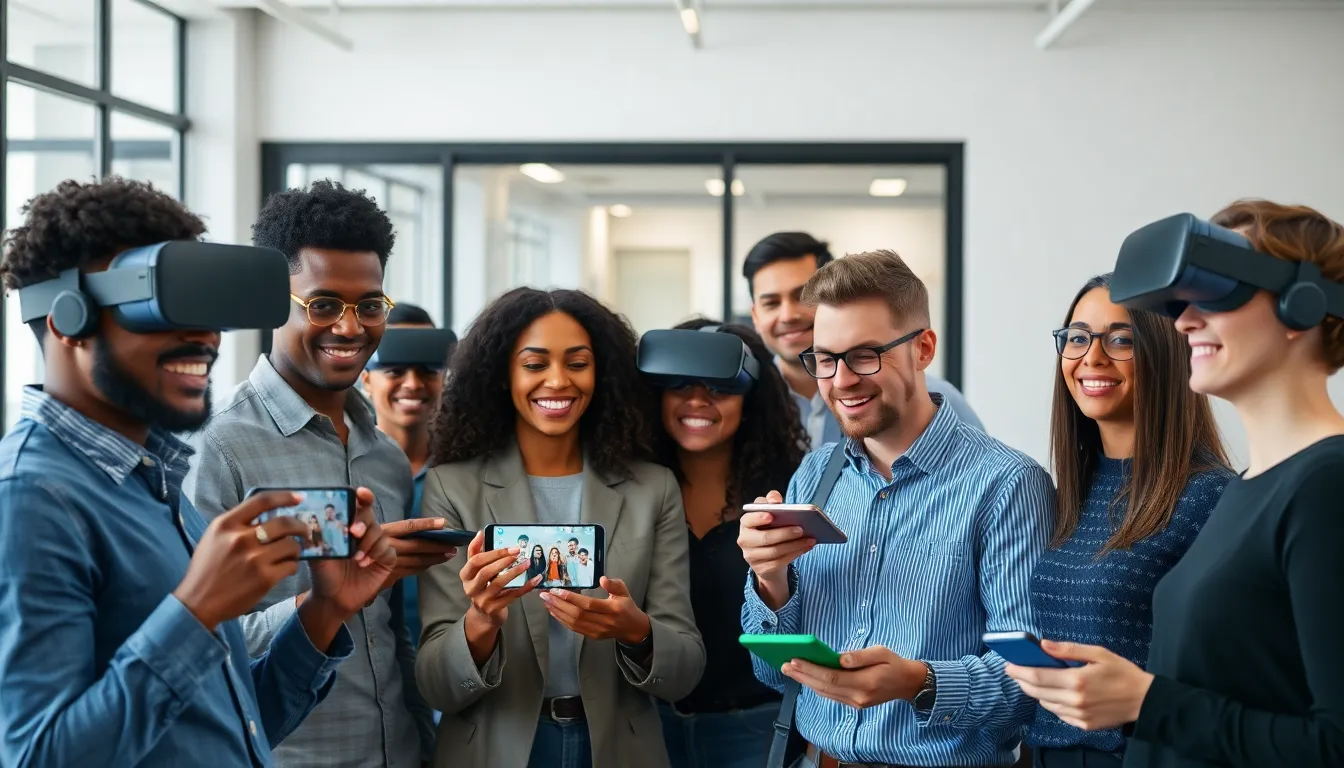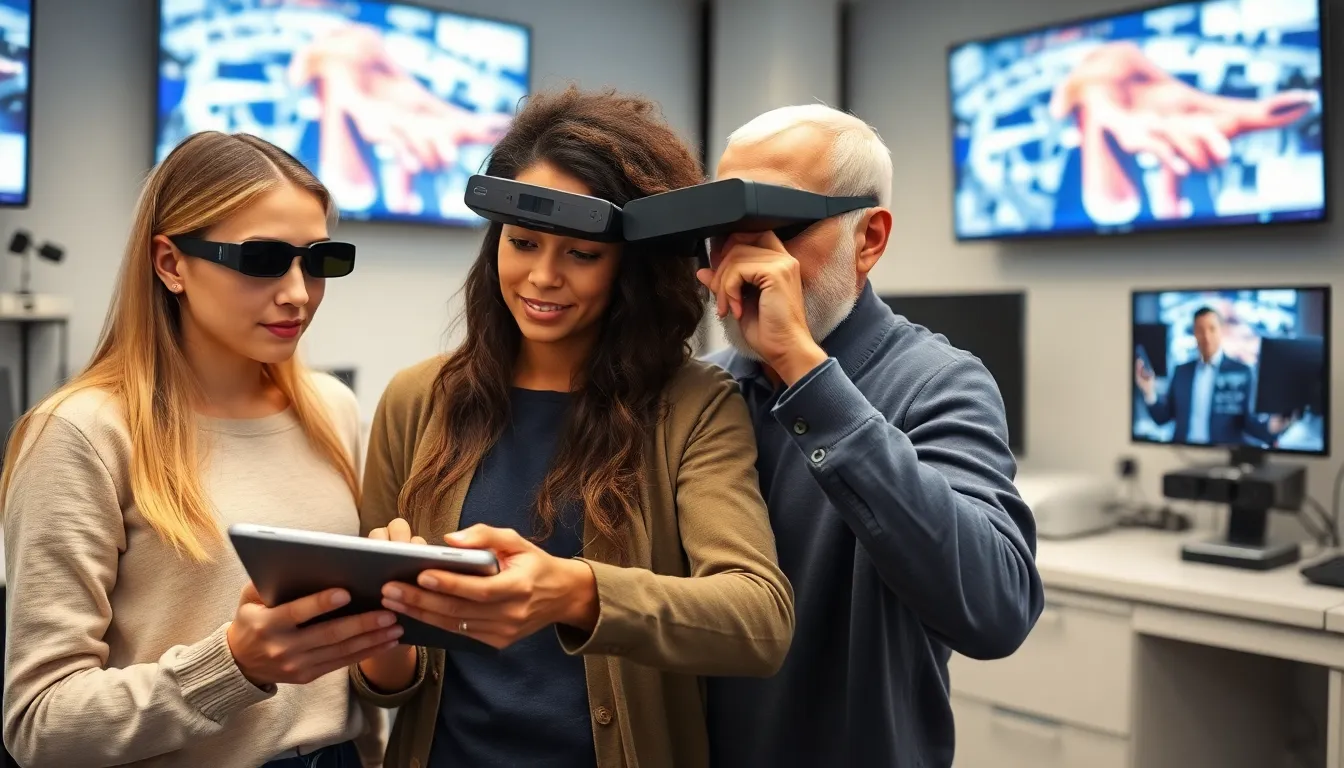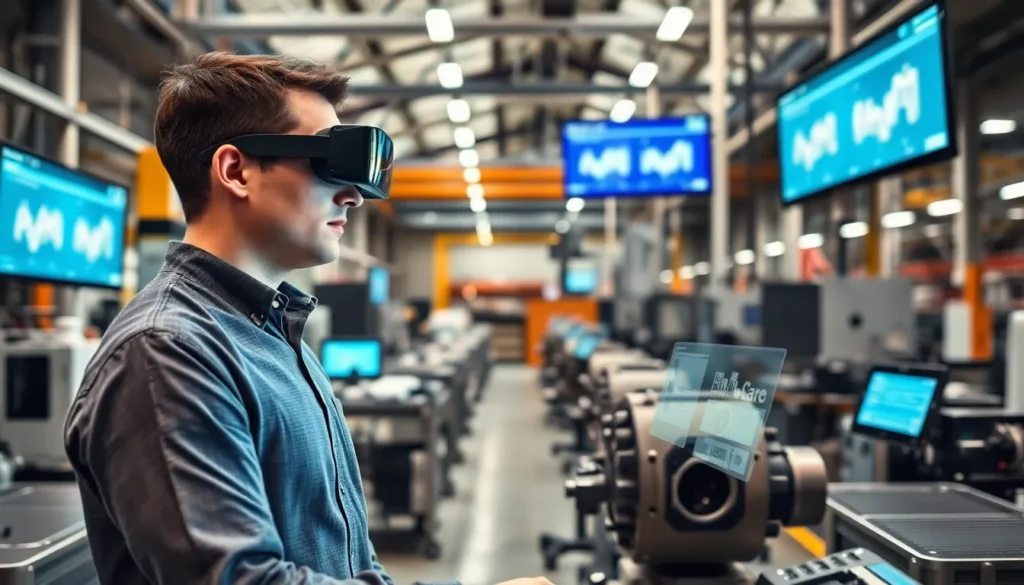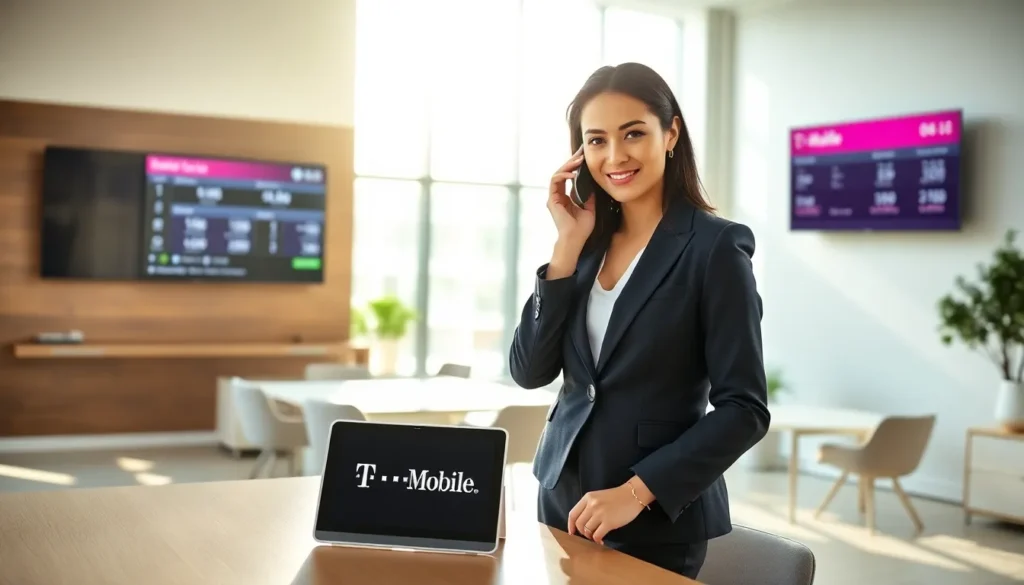In a world where augmented reality is no longer just a sci-fi fantasy, user testing for AR has become the secret sauce for success. Imagine crafting an experience so immersive that users forget they’re wearing goggles and think they’re living in a video game. But how do developers ensure their AR creations don’t just dazzle but also deliver? That’s where user testing struts in like a superhero in a spandex suit, ready to save the day.
Table of Contents
ToggleUnderstanding User Testing for AR
User testing plays a critical role in augmented reality development. This process ensures that AR experiences resonate with users and function seamlessly.
Importance of User Testing
User testing reveals how effectively AR applications engage users. Testing uncovers usability issues before launching products, helping developers refine user interfaces. Engaging in user testing enhances overall satisfaction as it aligns products more closely with user expectations. This practice can increase adoption rates significantly. Moreover, observing actual users provides invaluable insights that enhance product design, creating memorable experiences that drive continued use.
Key Components of User Testing
A successful user testing process involves multiple components. First, defining objectives sets a clear direction for the testing phase. Gathering a representative sample of users ensures that feedback reflects diverse perspectives. Creating realistic scenarios allows users to interact with AR features naturally. Analyzing the collected data provides critical insights into user behavior and preferences. Finally, making iterative improvements based on feedback helps refine the AR experience, ultimately leading to more captivating and effective applications.
Methods of User Testing for AR

User testing methods for augmented reality can significantly impact the quality of applications. Two primary approaches include in-person and remote testing.
In-Person Testing
In-person testing involves physical interactions with AR applications. Users engage directly with the environment, providing immediate feedback. Observers can assess user behaviors, noting reactions to various features. This method allows for real-time adjustments and clarifications on confusing elements. Additionally, facilitators can ask probing questions to uncover deeper insights. Simulating real-world conditions enhances the relevance of feedback. A focus on diverse user groups ensures a broader understanding of usability.
Remote Testing
Remote testing provides flexibility, allowing users to interact with AR applications in their own settings. It captures natural behaviors without the influence of observers. Participants access applications via smartphones or other devices, creating a more authentic experience. Gathering data through screen recordings and user surveys aids in analysis. This method can reach a larger, more geographically diverse audience, promoting inclusivity in feedback. Utilizing robust software tools enhances the efficiency of data collection and analysis. Prioritizing user comfort in their environments fosters candid insights about usability challenges.
Challenges in User Testing for AR
User testing for augmented reality (AR) comes with distinct challenges that can impact results. Addressing these hurdles is crucial for enhancing user experience.
Technical Limitations
Technical limitations significantly affect user testing in AR. Hardware incompatibility often creates barriers, restricting applications to specific devices. Keeping performance consistent across various platforms proves challenging, leading to discrepancies in user experiences. Users might encounter latency or glitches, hindering immersive interactions. Testing environments also present obstacles since real-world conditions may differ from controlled settings. These factors can distort feedback, complicating the understanding of usability. Developers must work around these limitations to gather accurate insights and ensure a seamless user experience.
User Engagement Issues
User engagement issues play a vital role in the effectiveness of AR applications. Low interest can stem from overly complex interfaces or poorly designed interactions, discouraging users from fully engaging with the technology. Recognizing the specific needs of varied user groups remains essential; not all users are familiar with AR. Inconsistent user experiences across different contexts may also affect engagement levels. Users may disengage if interactions feel unnatural or cumbersome, ultimately reducing the application’s overall impact. Keeping user motivation high contributes to positive feedback, which is critical for ongoing development.
Best Practices for Effective User Testing
User testing significantly enhances AR applications by ensuring they meet user expectations. Adopting best practices optimizes the testing process.
Setting Clear Objectives
Defining objectives at the outset guides the entire user testing process. Specialists establish what they aim to learn, focusing on usability, engagement, and specific features. Clear objectives help identify key performance indicators, making analysis easier later on. For example, measuring user satisfaction or task completion rates allows developers to gauge success accurately. Objectives should also align with user needs, ensuring that feedback addresses real-world usage. This alignment guarantees that insights gathered lead to actionable improvements in AR applications.
Involving Diverse User Groups
Diversity among user groups enriches the testing process. Recruiting participants from different demographics, backgrounds, and skill levels provides a more comprehensive understanding of user interactions. It expands feedback quality and contributes to discovering varying usability issues. Participants may provide insights on specific cultural contexts or unique challenges when using AR. Representing a wide range of users helps ensure that applications appeal to broader audiences. By prioritizing inclusivity, developers can create solutions that resonate with more users, ultimately resulting in enhanced user experience and satisfaction.
User testing is a vital component in the development of augmented reality applications. By prioritizing user feedback and addressing usability challenges, developers can create experiences that truly resonate with their audience. The insights gained from both in-person and remote testing methods empower teams to refine their products and enhance user satisfaction.
Ultimately, a commitment to effective user testing not only improves functionality but also fosters deeper engagement with AR technology. As the field continues to evolve, embracing best practices in user testing will be crucial for driving innovation and ensuring that AR applications remain relevant and enjoyable for all users.





